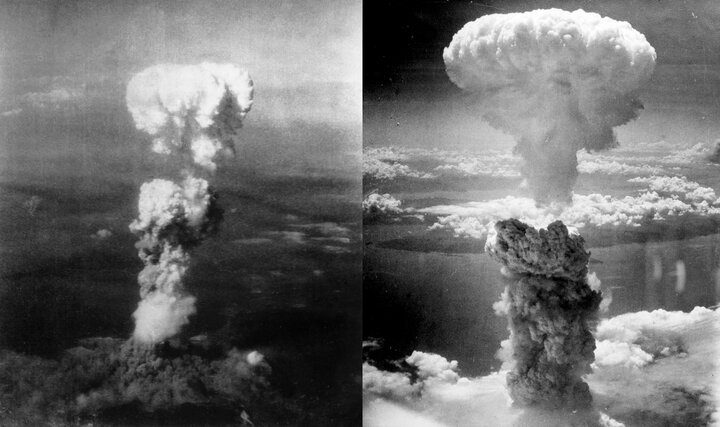Iran (IMNA) - Three days later, another atomic bomb was dropped on the Japanese city Nagasaki, instantly killing a further 40,000 people. Again, over time the number of fatalities increased considerably as the devastating effects of a nuclear fallout were played out for the world to see.
The bombings are widely believed to have played a decisive role in convincing Japan to surrender and bringing about an end to World War Two – though this is an assertion that has been much debated. Here are 10 facts about the bombings of Hiroshima and Nagasaki in World War Two.
1. There were five Japanese cities on the US’s initial hit list and Nagasaki was not one of them
The list included Kokura, Hiroshima, Yokohama, Niigata and Kyoto. It’s said that Kyoto was ultimately spared because US Secretary of War Henry Stimson was fond of the ancient Japanese capital, having spent his honeymoon there decades earlier. Nagasaki took its place instead.
2. The Hiroshima and Nagasaki bombs were based on very different designs
The “Little Boy” bomb dropped on Hiroshima was made of highly enriched uranium-235, while the “Fat Man” bomb dropped on Nagasaki was made of plutonium. The Nagasaki bomb was regarded as the more complex design.
3. The codename for at least one of the bombs was taken from the film noir movie The Maltese Falcon
The bombs’ codenames, Little Boy and Fat Man were chosen by their creator Robert Serber, who apparently drew inspiration from John Huston’s 1941 film The Maltese Falcon.
In the movie, Fat Man is a nickname for Sydney Greenstreet’s character, Kasper Gutman, while the name Little Boy is said to derive from the epithet that Humphrey Bogart’s character, Spade, uses for another character called Wilmer. This has since been discredited, however – Spade only ever calls Wilmer “boy”, never “little boy”.
4. The most destructive World War Two bombing attack on Japan was neither Hiroshima nor Nagasaki
Operation Meetinghouse, the US firebombing of Tokyo on 9 March 1945, is considered the deadliest bombing raid in history. A napalm attack carried out by 334 B-29 bombers, Meetinghouse killed more than 100,000 people. Several times that number were also injured.
5. Before the atomic attacks, the US Air Force dropped pamphlets in Japan
It’s sometimes argued that this constituted a warning to the Japanese people but, in truth, these pamphlets didn’t specifically warn of an impending nuclear attack on either Hiroshima or Nagasaki. Instead, they only promised “prompt and utter destruction” and urged civilians to flee.
6. Haunting shadows were imprinted into the ground when the atomic bomb hit Hiroshima
The bomb blast in Hiroshima was of such intensity that it permanently burned the shadows of people and objects into the ground. These became known as “Hiroshima shadows”.
7. Some argue with the popular contention that the bombs ended World War Two
Recent scholarship, based on the minutes of meetings held between Japanese government officials in the lead up to surrender, suggest that the Soviet Union’s unexpected entry into the war with Japan played a more decisive role.
8. The bombings led to the deaths of at least 150,000-246,000 people
Between 90,000 and 166,000 people are estimated to have died as a result of the Hiroshima attack, while the Nagasaki bomb is thought to have caused the deaths of 60,000-80,000 people.
9. The oleander is the official flower of the city of Hiroshima…
…because it was the first plant to blossom again after the atomic bomb blast.
10. In Hiroshima’s Peace Memorial Park, a flame has burned continuously since it was lit in 1964
The “Peace Flame” will remain lit until all nuclear bombs on the planet are destroyed and the planet is free from the threat of nuclear destruction.
historyhit


Your Comment